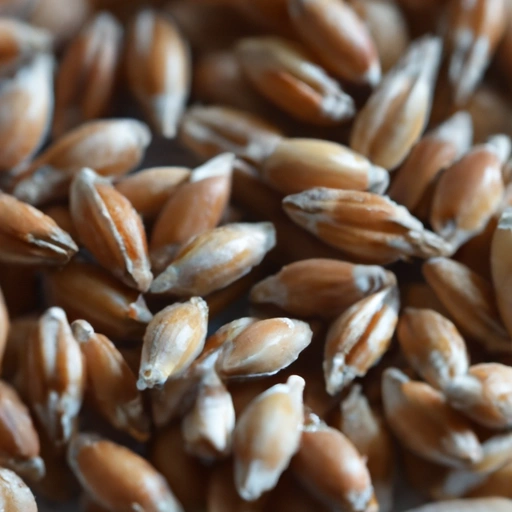Spelt
Description

Spelt is an ancient whole grain known for its nutty flavor and hearty texture. It is a species of wheat (Triticum spelta) that has been cultivated for thousands of years and is considered a staple in various traditional diets. Spelt contains gluten, which makes it unsuitable for those with celiac disease or gluten sensitivity, but it remains a cherished ingredient for its health benefits and rich taste.
Common uses
Spelt is commonly used in a variety of food products, including bread, pasta, cereals, and crackers. It is also found in whole grain form, often referred to as spelt berries, which can be cooked similarly to rice or barley.
Nutritional value
Calories
One cup of cooked spelt (194g) provides approximately 246 kcal (American units) or 1029 kJ (European units).
Protein
This serving size contains about 10.67 g of protein.
Fat
Spelt contains a modest amount of fat, with 1.65 g per cup of cooked grain.
Carbohydrates
It is rich in complex carbohydrates, offering around 51.29 g per cup.
Vitamins
Spelt is a good source of B vitamins, particularly niacin (B3), with around 4.44 mg per cup of cooked spelt.
Minerals
The grain is also notable for its mineral content, especially magnesium and phosphorus, providing 95 mg and 291 mg respectively per cooked cup.
Health benefits
Spelt is known for its high fiber content, which can aid in digestion and promote a feeling of fullness. The grain's nutrients may contribute to heart health, help in managing blood sugar levels, and support a healthy immune system.
Potential risks
While spelt does offer health benefits, it contains gluten and should be avoided by individuals with gluten intolerance or celiac disease. Overconsumption may also lead to gastrointestinal discomfort for some people.
Common recipes
Spelt is versatile in the kitchen and can be used in recipes for spelt bread, pancakes, muffins, and even waffles. It can also replace other grains in salads, soups, and stews.
Cooking methods
The whole grain form of spelt can be boiled or steamed, much like rice, while spelt flour can be used in baking. Additionally, spelt flakes can be enjoyed as a hot cereal.
Pairing with other ingredients
Spelt pairs well with a range of foods such as roasted vegetables, cheeses, and legumes. It also complements both sweet and savory flavors, making it a dynamic ingredient in many dishes.
Summary
Spelt is an ancient grain that offers a wealth of nutritional benefits and culinary possibilities. With its delightful taste and texture, spelt is a great addition to any kitchen, providing an opportunity to experiment with both traditional and innovative recipes.